 Image search results - "ome" Image search results - "ome" |

Tokyo Dome on March 3, 2006, the first day of the WBC's Asian Round.
|
|

Yoshino Baigo was a valley and hillside covered with ume plum trees. It boasted a wide variety of different plum blossoms. During full bloom as you can see here, the scenery was spectacular. One of the largest plum groves in Japan.Platform of Hinata-Wada Station with welcome banner 日向和田駅. Banner says, "Yokoso, Ume no Sato Yoshino Baigo." Yokoso means "welcome," and Ume no Sato means "plum town."
To get to Hinata-Wada, you have to change trains at Ome Station on the JR Chuo Line.
|
|

Tokyo Dome
|
|

Closest train station is Hinata-Wada Station. To get to Hinata-Wada, you have to change trains at Ome Station on the JR Chuo Line. 日向和田駅Sadly, spring 2014 was the last time we could see these trees. The plum trees were infected by the plum pox virus and the city cut down all the trees in 2014 to wipe it out. These photos were taken in 2006 when the plums were still fully glorious. Good news is that they have been replanting since 2016.
|
|

Front entrance to Tokyo Dome. Japan plays its first WBC game and the opponent is China.
|
|

Although still small, the replanted plum trees have been flowering. and the groves have reopened to the public. Yoshino Baigo poster. Yoshino Baigo is a small town in Ome city near Hinata-Wada Station.
|
|

Chinese team is introduced.
|
|

Road to Yoshino Baigo. Almost the entire town is lined with plum trees.
|
|

Japan's National Anthem is played.
|
|

Tamagawa River as seen from the bridge.
|
|

Tommy Lasorda after throwing the flubbed first pitch.He just threw the ball right on the ground like he wanted to throw it away. It wasn't a pitch at all. What was his problem?
|
|

Plum trees line the streets
|
|

Crowd behind homeplate. 16,000 yen seats.
|
|

Yoshino Baigo's main attraction is the Ume no Koen plum park. This is an entrance leading to the park.
|
|

China at bat.
|
|

Ume no Koen park straight ahead, you can see the hill covered with white.
|
|
|
|

Pitcher Koji Uehara, originally from the Yomiuri Giants.Unfortunately, Daisuke Matsusaka did not pitch this night.
|
|

Entrance to a temple with a view
|
|
|

Gokasho is famous for the grand, old homes of wealthy Omi merchants. Three of them are clustered together for us to visit inside. They are the former residences of Tonomura Uhee (外村 宇兵衛), Tonomura Shigeru (外村 繁), and Nakae Jungoro (中江
|
|

Sugawara house from Tsuruoka city, Yamagata Prefecture. In heavy snow, the front window was used as the door.
|
|
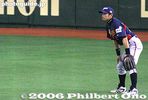
Ichiro in right field.
|
|

Great view from temple (no admission charge). Sadly, this is no more...
|
|

Front of Yoshida Chiaki's home in Niigata (formerly Niitsu) which I visited in Nov. 2007. Yoshida Chiaki composed a song called "Hitsuji-gusa" (Water Lilies) whose melody was used for the song "Biwako Shuko no Uta" (Lake Biwa Rowi
|
|

Former Hatano residence and birth home of Yoshida Togo 旧旗野邸 (吉田東伍生家)
|
|

Gokasho was home to many Omi merchants who plied up and down Japan during the Edo Period to sell and trade their wares. They became quite successful selling medicines, lacquerware, sake, etc.Wall of former home of Omi merchant Tonomura Shigeru (1902-1961) (外村 繁邸).
|
|

Ceiling
|
|

Ichiro at bat
|
|

View from temple. The plum pox virus was discovered in 2009. Since then, they have cut down the infected and surrounding trees.
|
|
|

Rear view of birth home of Yoshida Togo who was a famous geographer of Japan who compiled an encylopedia of Japanese place names. His son was Yoshida Chiaki who composed the melody of the song "Biwako Shuko no Uta" (Lake Biwa Rowing Song).
|
|

Former home of Omi merchant Tonomura Shigeru (外村 繁邸). MapTonomura Shigeru (外村 繁), Tonomura Uhee (外村 宇兵衛), and Nakae Jungoro (中江 準五郎)
|
|

Kitamura house brought from Hadano, Kanagawa
|
|

Ichiro at bat
|
|
|

Front gate of Yoshida Chiaki's home
|
|

A room in the birth home of Yoshida Togo
|
|
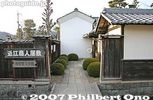
Entrance to former home of Omi merchant Tonomura Shigeru (外村 繁邸). Gokasho is also a National Important Traditional Townscape Preservation District (重要伝統的建造物群保存地区).
|
|

Kitamura house
|
|
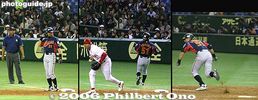
Right to left: Ichiro hits and reaches 1st base.
|
|

About 120 varieties of plum blossoms are planted, attracting 60,000 to 100,000 visitors during the flowering season.
|
|

Inner garden. I met Yoshida Yuki (吉田ゆき), the niece of Yoshida Chiaki who showed me the house and a few materials. Flowers planted by Chiaki still grow in the garden.
|
|

Garden of the birth home of Yoshida Togo
|
|

Entrance to former home of Omi merchant Tonomura Shigeru.
|
|

Nihon Minkaen is an outdoor museum of traditional farm and merchant houses with thatched roofs. They have 25 homes from around Japan many were donated to the museum for preservation.
|
|

Ichiro at 1st base.
|
|

Near the entrance to Ume no Koen plum blossom park that opened in March 1972.
|
|

Yoshida Chiaki's room on the 2nd floor.
|
|

Entrance to the Yoshida Togo Memorial Museum which exhibits various documents and personal effects of Yoshida Togo. Museum admission 300 yen. Closed Mon.
|
|

Living room of former home of Omi merchant Tonomura Shigeru.
|
|
|

Thanks to a homer by a teammate, Ichiro trots past 3rd base.
|
|

Ume no Koen (Plum Park) is a public park open from 9 am to 5 pm.
|
|

Yoshida Chiaki's room on the 2nd floor. This is where he spent his final days while stricken with tuberculosis.
|
|

Inside Yoshida Togo Memorial Museum. The 2nd floor also has a display panel about his son Yoshida Chiaki who composed the song "Hitsuji-gusa" whose melody was used in the song "Biwako Shuko no Uta" (Lake Biwa Rowing Song).
|
|

Omiko shrine maidens. On the previous day during the Sacred Carriage Procession, they performed sacred dances on a truck. お巫女
|
|
|
|

Ichiro and another go round 3rd base as China looks on helplessly.
|
|

200 yen admission charged during March only. But I went on April 1 so it was free (and full bloom).
|
|

View from Yoshida Chiaki's room on the 2nd floor. Sometimes they receive local school children for tours of the house.
|
|
|

Thatched roof
|
|

Ichiro reaches home as the umpire makes sure Ichiro steps on homeplate.
|
|

White weeping plum blossoms
|
|

Stairs from Yoshida Chiaki's room on the 2nd floor.
|
|
|

Water nozzles aimed at the house. No smoking.
|
|
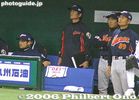
Head coach Sadaharu Oh (extreme right).Also on the left, see Ichiro in the dugout.
|
|

Red weeping plum blossoms at park entrance
|
|

Original copy of the magazine "Ongaku-kai" (The Musical Japan) where Yoshida Chiaki's song "Hitsuji-gusa" was first published and made popular. Issued in Aug. 1915. 音楽界
|
|
|
|

Woman's hairdressing room.
|
|
|

China's pitcher and catcher in a conference.
|
|

Red weeping plum blossoms
|
|

Table of Contents of magazine "Ongaku-kai" (The Musical Japan) 音楽界. Many music-related articles.
|
|

Entrance to Chomeiji Temple. MAP
|
|
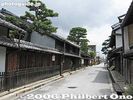
Shinmachi-dori road with traditional Omi merchant homes. This area is also a National Important Traditional Townscape Preservation District (重要伝統的建造物群保存地区). 近江商人の新町通り MAP
|
|

JR Fussa Station on the Ome Line. 福生駅
|
|

Room with Hina festival dolls and entrance to the Tonomura Shigeru Literature Museum. 雛祭りの雛人形
|
|
|

Mt. Mitake is one of Tokyo's easily accessible peaks via cable car. But it still requires a good deal of climbing up slopes and steps. You can also hike to adjacent Mt. Hinode-yama. Great daytrip getaway from Tokyo's concrete jungle.Getting off the train at Mitake Station on the JR Ome Line. I wasn't the only one who decided it was a good day to hike up Mitake. 御岳駅
|
|
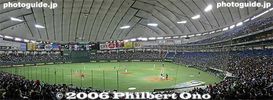
Tokyo Dome
|
|

Red weeping plum blossoms
|
|

On the first page is Yoshida Chiaki's song "Hitsuji-gusa" (Water Lilies) which was acclaimed enough to be published here.
|
|

In Omi-Hachiman, Shinmachi-dori looking toward Hachimanyama. This area is also a National Important Traditional Townscape Preservation District (重要伝統的建造物群保存地区).
|
|

JR Fussa Station connects to Seiyu
|
|

Hina festival dolls. 雛祭りの雛人形
|
|
|

Mitake Station on the JR Ome Line. 御岳駅
|
|

Ichiro at bat. Japan wins 18-2.
|
|

Pink and white weeping plum blossoms
|
|

On the first page is Yoshida Chiaki's song "Hitsuji-gusa" (Water Lilies). Although the melody is different, the lyrics are a direct translation of a childen's song called Water Lilies written by E.R.B. in the UK.
|
|
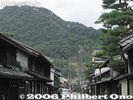
Shinmachi-dori looking toward Hachimanyama
|
|

JR Fussa Station, North side
|
|

Hina festival dolls. 雛祭りの雛人形
|
|

Yamada house
|
|

Miss Nippon
|
|

White weeping plum blossoms
|
|

Small book titled "A Garland of Flower-Poems" published in Japan. This was owned by Yoshida Chiaki and it includes the UK song "Water Lilies."
|
|

JR Fussa Station, North side
|
|

Here's one reason for the crowd...
|
|

Entrance to the former residence of Omi merchant Fujii Hikoshiro (1876-1956) (藤井 彦四郎邸)
|
|

Tonomura Shigeru Literature Museum (Bungakukan). Shigeru had a passion for writing, so he entrusted the family business to his younger brother. 外村 繁文学館
|
|
|

Miss Nippon throw beans, but not very far.
|
|

Mitake Station on the JR Ome Line. 御岳駅
|
|

Pink weeping plum blossoms
|
|

Page where "Water Lilies" is printed in the book. It is very likely that Chiaki found the song in this book, and decided to make his Japanese version. His signature is on the back of the book.
|
|
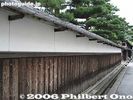
Wall
|
|

JR Fussa Station, South side
|
|

And another one. Young pretty/cute girls in costume pass out flyers, but end up being street models for amateur photographers who have no girlfriends to shoot.
|
|

The lighting inside the museum also changes to reflect the time of day. This is night time.
|
|

Former residence of Omi merchant Fujii Hikoshiro (1876-1956) (藤井 彦四郎邸). Now a history museum.
|
|

Picture of Tonomura Shigeru in the Literature Museum (Bungakukan). 外村 繁文学館
|
|
|

Kimono beauties and beans do mix well.
|
|

Bus stop for cable car station.
|
|

With about 1,300 plum trees, this park is probably Tokyo's largest plum tree grove.
|
|
|

JR Fussa Station, South side
|
|

They are happy to pose...
|
|

Day time
|
|

Omi merchant statue.
|
|

Attic
|
|

Emukai house brought from Nanto, Toyama. In the gasshi-zukuri style with steep roof. Kawasaki Nihon Minkaen
|
|

Women in kimono is a must on Setsubun day.
|
|

Bus for cable car station.
|
|

Work of art by nature
|
|
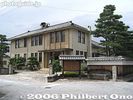
Local Artifacts Museum (Kyodo Shiryokan) 郷土資料館。近江商人・西村太郎右衛門の宅地跡にある資料館
|
|

JR Fussa Station
|
|

The maid costume is all the rage in Japan, for several years now.
|
|

Rice storehouse
|
|

Omi merchant statue.
|
|

Hina festival dolls. 雛祭りの雛人形
|
|

Nihon Minkaen, Kawasaki, Kanagawa
|
|

Minor female idols also on hand to throw beans.
|
|

Cable car station.
|
|

Path in plum park
|
|
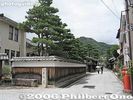
Shinmachi-dori next to Local Artifacts Museum
|
|

JR Fussa Station platform
|
|

Santa suit appears in Dec.
|
|

Cat on the roof. Meow is what you first hear in the museum. Its name is "Mamesuke." Actually a robot cat whose head can move up and down.
|
|

Bust of Fujii Hikoshiro
|
|

Hina festival dolls. 雛祭りの雛人形
|
|

Inside Emukai house
|
|

節分会に吉井怜、三津谷葉子、福下恵美が豆まく
|
|

Welcome to Mt. Mitake
|
|
|
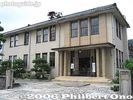
Local Artifacts Museum (Kyodo Shiryokan). Former residence of Omi merchant Nishimura Tarouemon. 郷土資料館
|
|

Foyer of house 玄関
|
|

Hina festival dolls. 雛祭りの雛人形
|
|
|

Bikini idols Yoshii Rei, Mitsuya Yoko, and Fukushita Megumi throwing beans on Setsubun
|
|

Cable car for Mt. Mitake.
|
|

Path on hillside of plum trees
|
|
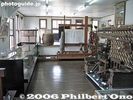
Inside Local Artifacts Museum (Kyodo Shiryokan)
|
|

Entrance room
|
|

2nd floor balcony (Watch your head).
|
|
|

Each mikoshi is preceded by a row of women carrying lanterns and wands. Also see the video at YouTube
|
|

570 yen one way. There's also a lift for an extra 100 yen. No one rides the lift.
|
|

Hillside plum trees
|
|
|

YouTube video of the song Hitsuji-gusa (Water Lilies) by a choir called Koai Gassho no Kai (小合合唱の会) performing at a memorial gathering on the anniversary of Chiaki’s death in Feb. 2013 at Chiaki’s birth home.Video uploaded by Ichii Yasuzo in Niigata.
|
|
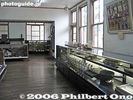
Inside Local Artifacts Museum (Kyodo Shiryokan)
|
|

Omi merchant display
|
|

2nd floor balcony
|
|
|

Cable car to Mt. Mitake
|
|

White plum blossoms
|
|
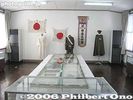
Connected to the Local Artifacts Museum is the History and Folklore Museum (Rekishi Minzoku Shiryokan) 歴史民族資料館
|
|

Corridor to rooms and garden.
|
|

View from 2nd floor balcony
|
|
|
|

Mitake-san Station for cable car
|
|

The park has about 120 varieties of plum blossoms. You can see how different they look.
|
|

Soldier's uniform, History and Folklore Museum
|
|

2nd floor with more Hina dolls.
|
|
|

Lookout deck near cable car station
|
|

The fragrance is also different. I smelled most of them, and well on my way to becoming a connoisseur of plum blossom fragrances.
|
|

History and Folklore Museum
|
|

Another guest meeting room 客間
|
|

2nd floor room with Hina festival dolls. 雛祭りの雛人形
|
|

Nihon Minkaen, Kawasaki, Kanagawa
|
|

Bean throwers make speeches.
|
|

View from lookout deck on Mt. Mitake, Tokyo
|
|

Perhaps the most common species of plum blossom.
|
|

Soldier's send-off flag, History and Folklore Museum
|
|

Main guest room 主客間
|
|

2nd floor room looking toward the balcony.
|
|

Toilet
|
|
|
|
|
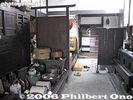
Omi merchant daily implements, History and Folklore Museum
|
|

Main guest room
|
|

Hina festival dolls in alcove.
|
|

The museum park has 25 homes from around Japan many were donated to the museum for preservation. Near Mukogaoka-yuen Station on the Odakyu Line. Closed Mon. Admission 500 yen.
|
|

Miss Nippon somethings
|
|

Mt. Hinode-yama which is next to Mt. Mitake.
|
|

Photogenic pink plum tree
|
|
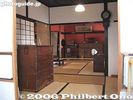
Omi merchant house, History and Folklore Museum
|
|

Main guest room
|
|

Hina festival dolls
|
|

Water mill
|
|

Throw the beans farther!
|
|

Lift station in middle (very short distance) which no one rides.
|
|

Photogenic pink plum tree
|
|

Procession maidens pose with the giant penis. The giant phallus was then partially hidden by the portable shrine as it is today. But this made the phallus become larger to 2.5 meters, as if to compensate for this partial shielding.
|
|
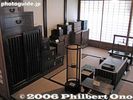
Omi merchant furniture, History and Folklore Museum
|
|

Exterior view
|
|

2nd floor with Hina festival dolls
|
|

Inside water mill
|
|

Fuku wa uchi!!
|
|

Welcome Gate. Everyone goes through here instead and walk toward the top.
|
|

Rare plum tree with both pink and white blossoms. It has one branch with pink flowers. Never saw that before.
|
|

Palanquin maidens.
|
|

This mikoshi is being carried by all women, already soaked to the bone. They carry the mikoshi flat on their shoulders. This is called "Hira katsugi," literally "flat carrying."There are four basic methods of carrying a portable shrine. This is the most basic method where they carry it flat on their shoulders. This is called "Hira katsugi," literally "flat carrying."
|
|
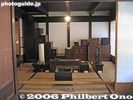
Omi merchant furniture, History and Folklore Museum 近江商人の帳場風景
|
|

Exterior view
|
|

Hinamatsuri dolls
|
|

Hydrangea
|
|

Setsubun bean throwing at Takahata Fudoson temple, Hino, Tokyo
|
|

Back of welcome gate.
|
|
|
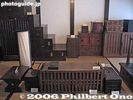
Omi merchant desk, History and Folklore Museum 近江商人の帳場風景
|
|

Spacious garden outside Fujii Hikoshiro house
|
|
|

Setsubun bean throwing at Takahata Fudoson temple, Hino, Tokyo
|
|

Torii ahead. Mt. Mitake is topped with a Shinto shrine.
|
|
|

808 steps to Chomeiji. Chomeiji (Long Life Temple) worships the Kannon goddess dedicated to long life and good health. It belongs to the Tendai Buddhist sect.
|
|
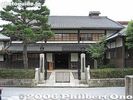
Former Ban family Omi merchant home which also served as a girls school and public library until 1997. Omi-Hachiman, Shiga. 旧伴家住宅Opened to the public in 2004 as a museum. 伴庄右衛門は江戸時代初期から活躍した八幡商人の一人で、屋号を扇屋といい、主に畳表・蚊帳を商い豪商となった。
|
|

JR Haijima Station being renovated in early 2007. 拝島駅
|
|

Spacious garden outside Fujii Hikoshiro house (in background)
|
|

Kitchen area with dirt floor.
|
|

Torii
|
|

These red ones also smell very nice. Different from the white ones.
|
|
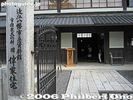
Entrance to former Ban family residence. Completed in 1840. 旧伴家住宅伴庄右衛門は江戸時代初期から活躍した八幡商人の一人で、屋号を扇屋といい、主に畳表・蚊帳を商い豪商となった。
|
|

Walking guide to Fussa at Haijima Station.
|
|

Pine tree in garden
|
|

Kitchen area
|
|

Back of torii
|
|

Ginza 4-chome
|
|
|
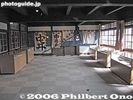
Inside former Ban family residence. They made their fortune selling mosquito nets and tatami straw matting.
|
|

Haijima Station platform 拝島駅
|
|

Spacious garden and Fujii Hikoshiro house
|
|

Furo bath wirth wooden barrel (heated by firewood)
|
|
| 3626 files on 15 page(s) |
1 |
 |
 |
 |
 |
|